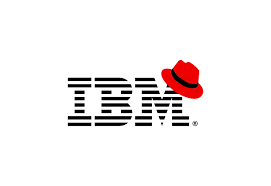
Our MAS Single hosting plan utilizes Red Hat “Single Node Openshift” (SNO) to provide a simpler and more budget-friendly architecture for smaller organizations or workgroups to run Maximo Application Suite on a dedicated server.
Our goals in creating this innovative hosting plan:
- Match the “single Production Maximo server or cluster” deployment that many organizations have used successfully for prior Maximo versions for over a decade.
- Don’t require companies to use a multiple-server MAS cluster if they don’t need it to support their concurrent user base. We do offer a “MAS Cluster” plan which is also innovative in that it provides as few as two server nodes, to support more users cost-effectively.
- Provide a Red Hat Openshift deployment that IBM and Red Hat consider to be appropriate for production use.
- Provide a MAS deployment that MaxStack can quickly provision for our hosting clients.
- Provide a deployment that supports cluster backup/restore.
- Give Maximo organizations a way to run a dedicated MAS system that permits them to retain more control while also reducing their cost, rather than having to resort to a more limited shared Maximo system such as a “Maximo as a Service” approach.
For a comparison of our MAS plans, see Our MAS Hosting Plans
Following is information from IBM Red Hat and AWS:
Save Costs with Single Node OpenShift (SNO) Deployments of IBM Maximo on AWS
IBM Maximo Application Suite (MAS), when paired with Red Hat Single Node OpenShift (SNO) on AWS offers an agile, cost-effective solution for asset management within SME (Small and Medium scale) settings. This simplified OpenShift configuration converges control and worker functionalities into a single Amazon Elastic Compute Cloud (Amazon EC2) node, fostering a lightweight, streamlined Kubernetes environment.
… It retains full feature parity with larger deployments, promising ideal utility for small to medium-sized operations where uptime is less critical.
Key Advantages of Maximo Application Suite (MAS) on Single Node OpenShift (SNO)
Single Node OpenShift (SNO) architecture reduces hardware requirements and simplifies cluster management, lowering operational costs, making it ideal for small to mid-sized businesses and remote site deployments.
Despite its lean nature SNO does not support horizontal scaling; however, it allows for vertical scalability. This means customers can enhance their capacity to meet growing demands, ensuring that SNO remains a beneficial solution.
Use Cases that may be suitable for SNO:
- Small MAS implementations that range under 70 concurrent users
- Upgrading small Maximo customers to MAS

